What was just a concern a few years then became a problem and now it has become a nightmare. We are referring to booking cancellations, which have increasingly grown to unsustainable levels, in some cases above 40% and 50%.
Some hoteliers have considered this normal and have adapted their daily operations and even their strategy to such levels of cancellations, even stating that it’s no trouble and that it doesn’t incur any extra cost. A surprising statement and one I could not disagree more with.
Why so many cancellations? Who is responsible?
There is no doubt that advances in technology make it increasingly easy and simple to book a hotel on the Internet. This factor encourages us to do it even when we are not sure that we are travelling, which results in many cancellations.
At the same time, there is growing pressure from OTAs for clients to finalise their booking, which once again generates new bookings that, in many cases, will end up being cancelled.
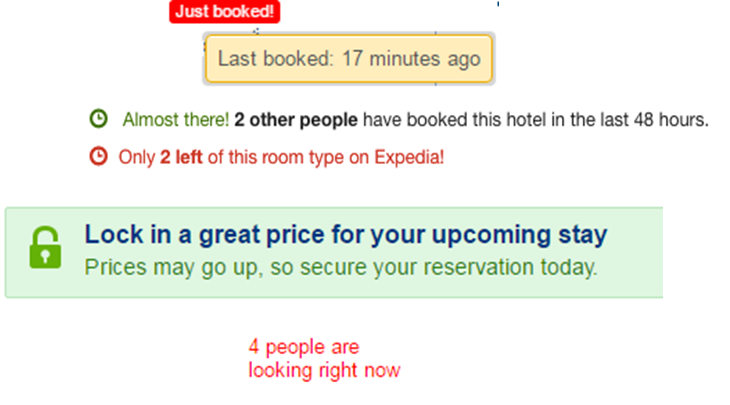
Lastly, the client has got used to booking “in case I go” or with the idea of carrying on looking: “I book a couple of hotels now but when the date arrives I will look for a better or cheaper one”. Once again, more cancellations.
Are OTAs to blame for so many cancellations?
Many hoteliers are furious and blame OTAs for this huge amount of cancellations, arguing the fact that “many bookings are cancelled a few days before check-in and this causes many problems”.
It’s obvious that OTAs have an impact on cancellations one way or another but let’s not forget that OTAs are just the tool and that it’s the hotel who sets the rules. The main reason behind so many cancellations is the passivity of the industry who, due to lack of time or not knowing how to deal with the problem, has been carried away assuming that these are the new rules of the game and that they must be accepted.
All OTAs allow you to create and apply different cancellation policies depending on dates and/or rates: “non-refundable”, “flexible up to 24 h.” and “up to 7 days before check-in” are just some of the examples. However, hotels tend to abuse flexible cancellations, even on the “hottest” dates. A few years ago, the main reason was the economic crisis (“I will take everything that is coming in because I need it”) and now it’s “if the competition is doing it, I cannot do the opposite”, which sounds a bit like “if everyone is jumping out of the window, so will I”.
Costs associated to cancellations
However, are so many cancellations bad? Do they affect our RevPAR or our GOP? Of course they do, and for many different reasons.
- Loss of income in the shape of unsold rooms (opportunity cost). An unsold room due to a cancellation (especially close to the check-in date) is something that you cannot afford, especially during high season. This impact, which is difficult to measure, is critical since it fully attacks your most important part of your income statement: the income itself.

- Special mention to the impact of no-shows. A no-show is just a cancellation with no notice. It’s the worst-case scenario since it leaves the room unsold for at least the first night. For the rest of the nights, you have very little room for manoeuvre. For urban destinations where average stays range from 1.5 to 3.5 nights, the problem is not as big when compared with holiday destinations (avg. stay 4 to 10 nights), where the problem is much bigger.
The no-show impact can be reduced by:
- Charging the client for the first night or the first two nights (assuming that it the charge doesn’t bounce, something which is not always the case).
- In hotels with high last-minute sales and walk-ins where you can find occupants for the rooms from the second night forth.
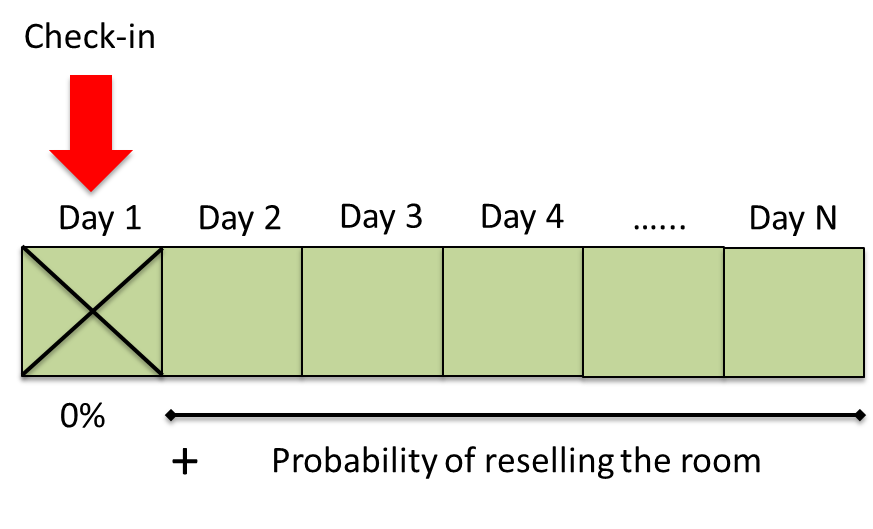
- Lower RevPAR when edged towards wrong revenue management. Seeing how bookings come in means you have to make decisions on the prices that, in the end, may be wrong. How many more rooms could you have sold if you had carried out a proper revenue management? It’s hard to estimate but there’s a high probability that it could’ve been many more. This affects both high and low seasons, which places a question mark on the statement that “cancellations aren’t a problem during low season”.
- Lower RevPAR when selling cheaper at the last minute. Cancellations just before check-in leave you with very little room for manoeuvre and, on many occasions, no alternative but to lower the price in order to sell the room, which then lowers your RevPAR.
- Higher distribution cost (or net RevPAR) when using OTAs too much for last-minute sales. It’s normal to lean on OTAs when you’ve had last-minute cancellations and you are trying to desperately sell the freed-up rooms. The problem is that you do so at a higher cost (channel cost, override, etc.), something which happens especially when they cancel a booking from your direct channel (the one with the lowest cost).
Some hotels see last-minute cancellations during high season as a “blessing” since they can then sell those rooms at a higher price. This may be true in some particular cases but a calculation should be made on how much extra production did you get compared to unsold rooms. Awaiting cancellations to increase the price is a huge gamble.
- Direct operating cost. For hotels that do not have an automatic download of bookings and cancellations, the time that a person takes making bookings which will then be cancelled is high. Time is money.
Cancellations aren’t the important part, here. The important part is the notice period of the cancellation
It’s better to have 70% of cancellations and knowing about them in good time than 20% of cancellations that are notified at the last minute. Booking.com purists will quite rightly argue that many cancellations penalise you in the ranking. However, let’s leave this point aside for now.
The notice period of a cancellation is therefore the important part and the one on which you have to work on and devise a strategy orientated towards putting the cancellations forward as much as possible in order to put the cancelled rooms back on sale and not end up with an unsold room. In this example, the cancellation has barely any impact because you have not yet increased the price and you have plenty of time to resell the room.
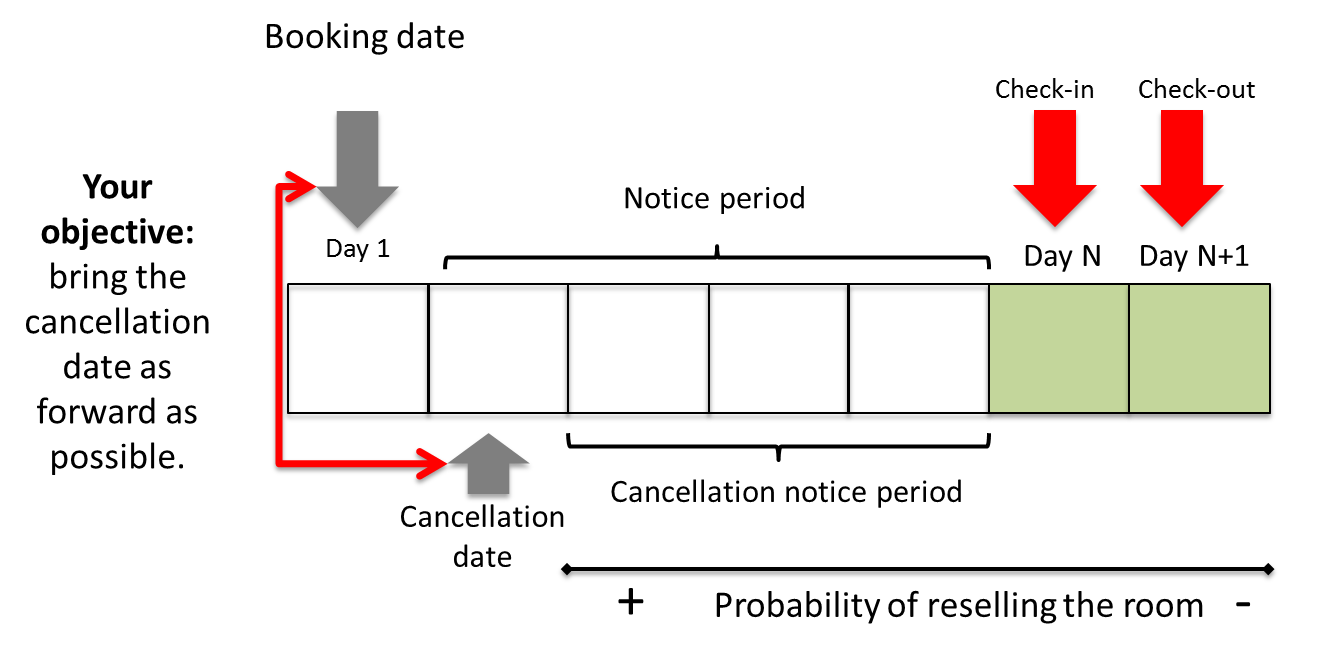
How to reduce the impact of cancellations on my hotel?
In order to minimise the impact, as well as knowing the hot dates of your hotel as well as the destination pickup, it’s important to abandon the concept that “non-refundable” implies discount. Let’s see why:
Some techniques to minimise the impact of cancellations are:
- Measure, measure and measure. If you want to deal with the problem of cancellations, first you need to understand the problem at hand. What percentage of cancellations do you have? How does it vary per channel? Per month? Per source market? Per room type? What is the notice period of the cancellation? Your PMS should be able to provide you with all of these details. If he can’t, you have a problem. You are trying to solve a problem which you don’t know of. At Mirai, we publish a detailed cancellation report in order to make our clients’ decision-making process a lot easier.
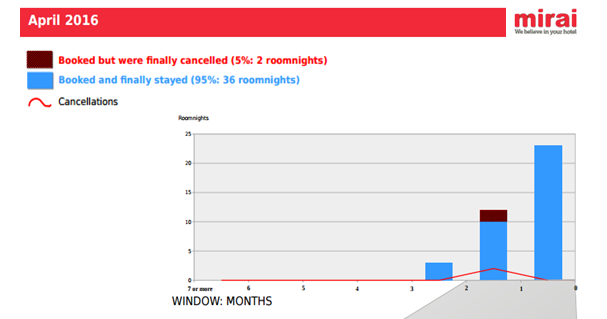
- Identifying false bookings. Bookings that you know are going to be cancelled but can do nothing but wait for that to happen are a big problem for many hotels. In these cases, you can charge and then refund 1€ for suspicious bookings the day it comes in and they will quickly come to light.
- Along the same lines, limit the number of nights on flexible rates to 4-5 (in urban destinations) and 7-8 (in holiday destinations), especially for OTAs. In these cases, leave just the non-refundable one available. In some countries, bookings of 15 or more nights are required in order to obtain a travel visa.
- Preventing cancellations. Another good idea is to communicate with the client who has booked stays of higher value and give him a good pre-stay service, which will then reduce his tendency to cancel the booking.
- Control the price on other channels. If you don’t control your distribution, your clients may find a better price for your hotel on an OTA with which you usually do not have a contract with. If this happens, the client will cancel the booking he had on your channel and book it again on another, where you will most likely have a lower margin of profit. Also, it will portray a bad image of the hotel to the client.
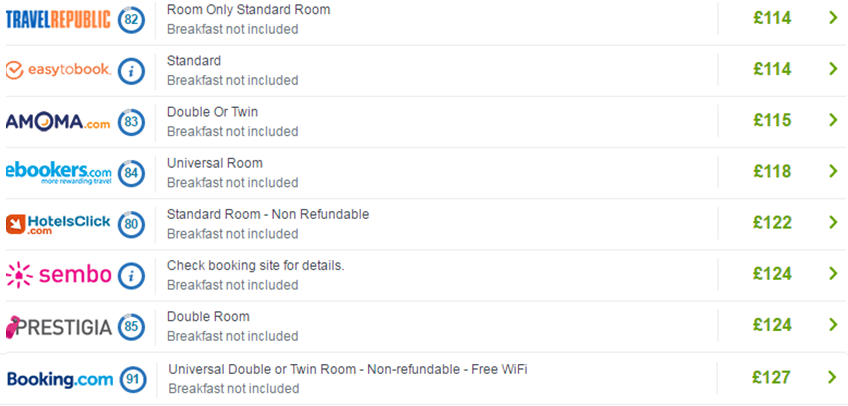
- Do not waive cancellations in your non-refundable rates. If your client gets used to cancelling non-refundable rates, that can be a problem. This practice can be done on your direct channel (to build loyalty) but never through an OTA (since it’s the OTA who then builds loyalty).
- Apply a revenue-management strategy that goes beyond the price. As occupation increases, as well as gradually increasing the price you should also make the cancellation policy more restrictive. Prepare your system with 24 h. notice, 2-3 days and even 7-14 days for holiday destinations. It won’t be a large obstacle for the sales and it will give you more room for manoeuvre in the event of a cancellation.
- For low and middle season dates, you can apply a strategy combining flexible rates with non-refundable ones (this time linked to a discount). This does not necessarily imply lowering your average price. We wrote a post dedicated to this matter here.

- For the hottest dates where demand exceeds your number of rooms, apply a non-refundable policy as the only one available, even if your competition does not do so. In this case, we would never apply the discount that we would normally associate to “non-refundable” but rather maintain the rate. It’s important to do so, even if there is not much time left for high season. Forget about leeway. If you are certain you are going to fill your hotel, don’t accept a single booking with a high probability of cancellation.
Your booking rhythm will slow down and this can be scary, which is why many hotels don’t do this. If it’s a hot date that you’ve always been full for, you won’t be wrong. In any case, you will fill the hotel up later than usual (the competition will already be full) but you will do so at a higher price.
Conclusion
Assuming a high level of cancellations is a dangerous game that can make you lose money and increasingly depend on intermediaries. Despite the fact that OTAs encourage the client to book (and cancel) with great ease, remember that the conditions of that sale are set by you. Is the objective to make money or fill the hotel as soon as possible?. Managing your distribution and controlling cancellations instead of them controlling you is in your hands.



